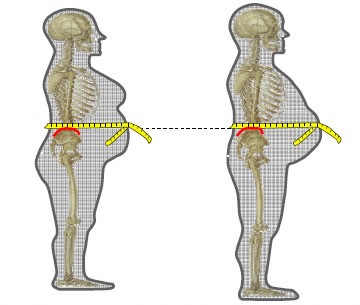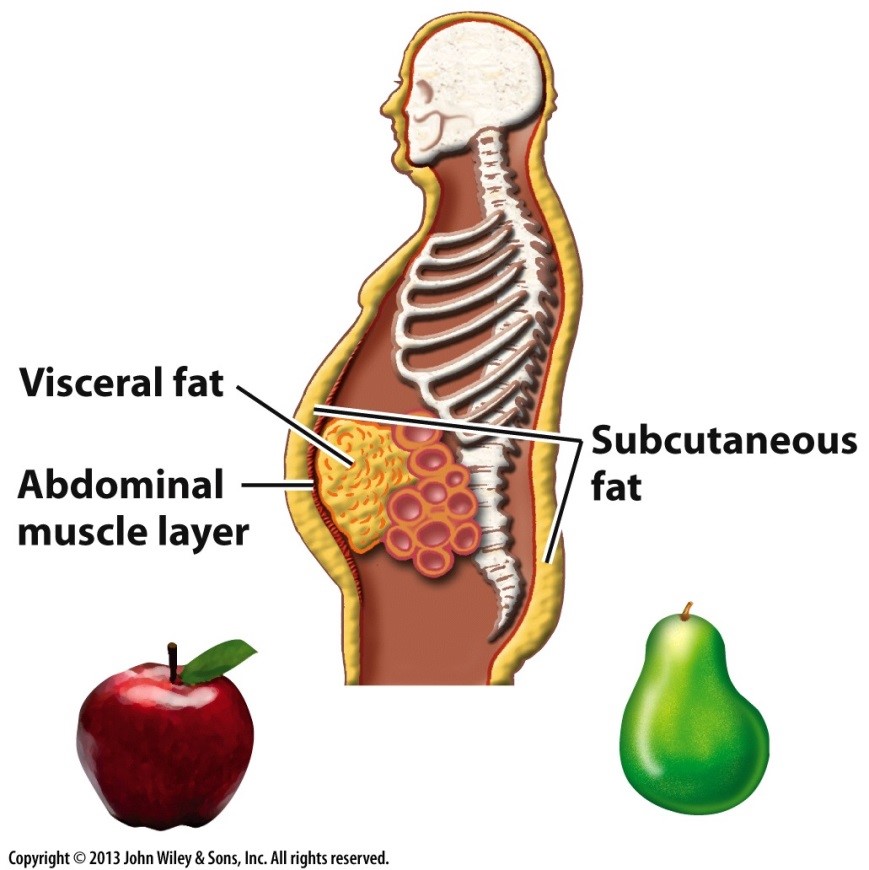
In this Podcast Tabitha Hume, author of the X Diet talks about Syndrome X and what it means to you.
Please click on the play icon to start listening to the podcast


Obesity – Different Types
There is a pandemic affecting over 314 million people globally. It is called obesity. It is one of the primary causes of non-communicable diseases, and is increasing faster than the medical fraternity was ready for. It is costing governments and health sectors billions, causing dramatically decreased quality of life and causing more and more deaths daily.
If you take your Height in metres. Times it by itself, and divide your weight in kg by this result, you will get your BMI.
Weight (kg) / (Height)2
BMI Calculator
Imperial
Metric
Height
1
2
3
4
5
6
7
8
ft
1
2
3
4
5
6
7
8
9
10
11
in
Weight: lbs
Height: cm
Weight: kg
Calculate
Powered by Easy BMI Calculator
For instance, if you are a 1.68m woman, and weigh 78kg, your BMI will be as follows:
78 / (1.68 x 1.68) = 78 / 2.82 = 27.7kg/m2
A BMI of <19 is considered underweight and is associated with medical problems.
A BMI of 20-25 is considered a healthy weight and is associated with the least risk factors of lifestyle disorders.
A BMI of 25.1 – 30 is considered overweight and is associated with increased risks of developing lifestyle disorders
A BMI of 30.1 and above is considered obese and is strongly associated with the development of dangerous lifestyle disorders.
However, research has shown that although increased body weight is associated with decreased health, there is a kind of fat distribution which is very strongly associated with developing serious lifestyle disorders.
Because of this finding, we are now placing much less importance on the BMI and focusing directly on the waist-hip ratio of people. Further from this, it has actually been proposed more recently that merely measuring the waist circumference is a much simpler and more accurate method to tell the extent that the individual is at risk for developing lifestyle disorders.
A woman with a waist circumference above 88cm is at increased risk of developing lifestyle disorders.
A man with a waist circumference above 102cm 88cm is at increased risk of developing lifestyle disorders.
How to measure your waist circumference?
To correctly measure waist circumference:
Stand upright and place a tape measure around your middle, just above your hipbones.Make sure tape is straight and horizontal around the waist. Doing this in front of a mirror will aid in accuracy.Keep the tape snug around the waist, but not compressing the skin.Measure your waist just after you breathe out and allow the stomach to relax.

Lifestyle disorders…. Caused by insulin
As you can see, being overweight is no longer of concern due to aesthetic reasons. It is a serious condition which is now being treated as a disease.
And it is deadly.
Even someone who carries very little fat on their body, but has an enlarged waist circumference, will indicate a worrying prognosis for disease development. This is because it is a clear sign that their body produces TOO MUCH INSULIN when they eat. This is because that person has become INSULIN RESISTANT.
Insulin prefers to store fat ON THE STOMACH AREA rather than anywhere in the rest of the body, which is why someone who appears to not be overweight but has a marked increased waist circumference (apple-shaped), will probably have this problem.

Source: Courtesy of John Wiley & Sons
You may notice from the diagram above that the visceral fat (the fat mass in between all of the internal organs) actually pushes out muscles and stretches the skin somewhat. This is why the enlarged stomach of some people actually feels ‘hard’! This is because the INSIDE fat has stretched the muscle and skin until it is taught. Although it may not visibly ‘wobble’, this kind of hidden fat is deadly because is indicates insulin resistance.
What is insulin resistance?
Insulin resistance is when the body becomes ‘deaf’ to the actions of insulin, and thus the body is forced to produce far too much insulin to keep blood glucose levels normal.
This can be very tricky and long-winded to explain, but very basically the process is as follows:
After eating, carbohydrates release glucose into our bloodstream.Usually, INSULIN would be released in order to take the glucose out of the bloodstream, and push it into the muscles to be used as energy.When the body no longer ‘listens’ to insulin’s instructions to accept glucose, the body is forced to produce more insulin in order to deliver glucose to the muscles.Thus, the body is RESISTANT to insulin, and MORE insulin has to be produced to control blood glucose levels.Someone who produces MORE insulin than normal after eating will be an effective ‘storer’ of any fat eaten at the same time.And because insulin stores fat in the VISCERAL area predominantly, it is easy to tell insulin resistance from someone’s waist circumference.
Watch my 5- minute video to understand this in a more fun way.

If one’s blood glucose levels are still normal (despite elevated insulin to achieve this), then there is no diabetes, so why worry? The answer to this lies in what TOO MUCH INSULIN DOES. Insulin has small and important effects on all the organs all around the body. But when there is too much insulin, these effects become pathological.
Too much insulin has the following effects:
It is a STORAGE messenger and so stores any fat or oil eaten on the visceral area, increasing waist circumference rapidly.It causes the liver to increase the amount of dangerous cholesterol poured into the bloodstream, increasing risk of heart attacks and strokes.It deposits fatty masses throughout the liver, This is called non-alcoholic fatty liver, because if viewed in a lab, the fattiness of the liver resembles identically, the liver of an active alcoholic. This, obviously, will lead to cirrhosis and liver diseases.It alters the way the liver eliminates uric acid from the blood. When there is too much insulin, the kidneys retain more uric acid in the blood stream, leading to the development of GOUT and inflammatory joint pain.It also changes the way the kidneys and vessels maintain blood pressure. An increased insulin production slowly increases blood pressure over time. This, too, can lead to deaths from cardiovascular events.It changes the normal functioning of the reproductive organs in both men and women. Elevated insulin affects the ovaries by decreasing progesterone and increasing oestrogen and testosterone. This leads to Polycystic Ovarian Syndrome (PCOS) which is a type of infertility. Male sperm virility also decreases with a higher insulin production.Kidney damage and disease is associated with long-term high insulin production.The more insulin is produced, the more ‘deaf’ the body becomes to it, eventually leading to blood glucose levels remaining elevated after a meal, despite huge amounts of glucose attempting to do their job. This is called Type 2 Diabetes.There are many more effects that TOO MUCH INSULIN causes, see below…

ALL OF THESE DISORDERS ARE CAUSED BY TOO MUCH INSULIN.
The myriad disorders caused by too much insulin is called
‘Syndrome X’ or ‘Metabolic Syndrome’
Treating these disorders should be underpinned by a primary aim of reducing insulin production.
This is what I do. I treat insulin problems.



